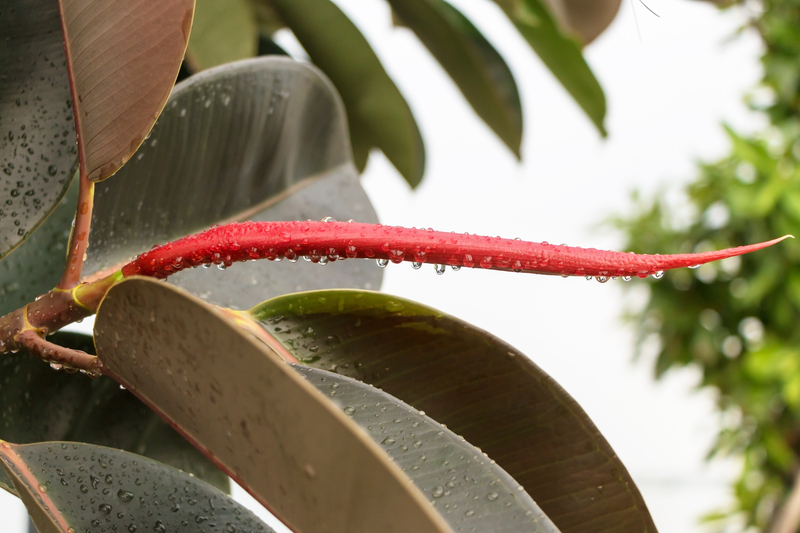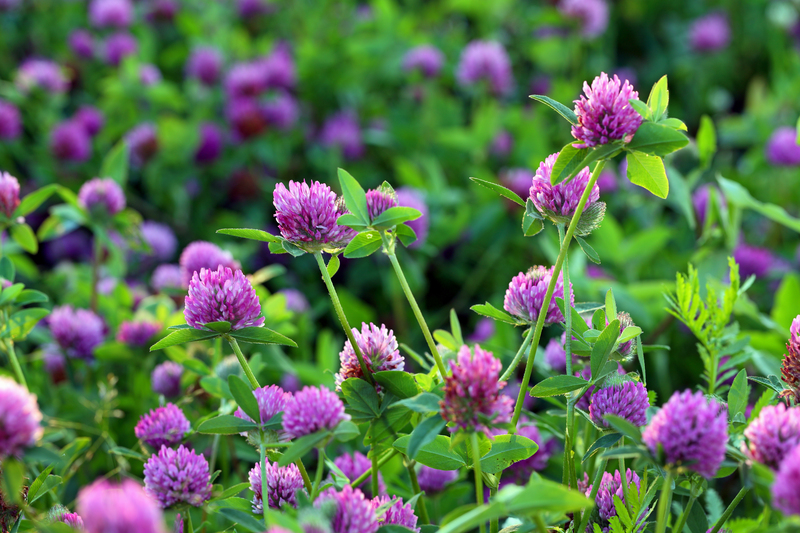Start Your Lawn Off Right with These Vital Care Secrets
A lush, green lawn is the pride of every homeowner. But have you ever found yourself wondering why your neighbor's grass always seems greener and more vibrant? If you want to start your lawn off right, knowing some vital lawn care secrets can make all the difference! Whether you are a seasoned gardener or just getting started, this comprehensive guide covers everything you need to maintain thriving turf all year long.
The Fundamentals of Early Season Lawn Care
You might think grass is simple, but establishing a healthy lawn requires attention to timing and detail. Early season lawn care sets your landscape up for success. Here are essential practices to keep in mind:
1. Soil Testing: The Unsung Hero of Lawn Health
Before taking any action, perform a soil test. Understanding your soil's needs regarding pH, texture, and nutrient levels lets you make informed decisions about how to care for your yard. Many common lawn issues are rooted in poor soil health. Testing helps you:
- Determine if you need to add lime to reduce acidity.
- Gauge existing nutrient levels and select the right fertilizer.
- Understand drainage and soil structure for better root growth.
You can get soil testing kits at most garden centers or contact your local cooperative extension office.
2. Rake and Remove Lawn Debris
The start of the growing season is the perfect time to rake up leaves, twigs, and dead grass that have accumulated over winter. This vital lawn care step allows light, water, and fresh air to reach the soil while preventing mold and disease.
- Use a flexible rake to remove debris without uprooting healthy grass.
- Don't forget to clear away any rocks, thatch, or pet waste.

Refresh Your Lawn with Proper Aeration
Aeration is one of the best-kept secrets for starting your lawn off strong. Compacted soil chokes out grass roots and reduces water infiltration. By aerating your lawn, you alleviate compaction and encourage deeper root growth.
How to Aerate Effectively
- Timing: The ideal time to aerate is in early spring or fall, depending on your grass type.
- Tools: Use a core aerator, which pulls plugs of soil from the ground, rather than a spike aerator which may worsen compaction.
- Coverage: Go over the area in a grid pattern--two or three passes are sufficient for heavy clay or high-traffic lawns.
After aeration, overseed and fertilize for maximum benefit--new grass seed will have excellent contact with soil, and nutrients will penetrate to the roots more efficiently.
The Secret to Mowing Right: Height and Frequency Matter
Mowing is more than a cosmetic chore. The way you mow plays a direct role in lawn vitality. Start your mowing routine early and remember these expert tips:
Mow High for Healthy Grass
- Keep blades sharp to ensure a clean cut (dull blades tear grass and invite disease).
- Remove only the top third of grass at a time; cutting too short ("scalping") exposes roots, encourages weeds, and stresses your turf.
- Ideal mowing height: 2.5 to 4 inches for most grass types.
Grasscycling for Lawn Nutrition
Leave the clippings on the lawn! This practice, known as grasscycling, adds valuable nutrients back into the soil and keeps your grass looking vibrant.
Pro Tip: Change mowing patterns each time to avoid soil compaction and uneven grass growth.
Water Wisely for a Thriving Lawn
Water is essential but overwatering can do more harm than good. Follow these vital secrets for watering your lawn the right way:
- Water deeply but infrequently. Aim for 1 inch of water per week, delivered in one or two sessions.
- Best time to water is early morning (before 10 a.m.)--reducing evaporation and fungus risk.
- Monitor rainfall and cut back on supplemental watering to avoid a soggy lawn.
- Check for runoff: If water starts to puddle or run off, break up your watering into shorter intervals.
Well-watered lawns will have deep roots and greater drought resistance throughout the season.
The Fertilization Formula: Give Your Grass a Head Start
A critical lawn care secret many homeowners overlook is timing and choosing the right fertilizer. Fertilizing gives your lawn a much-needed boost as it wakes from winter dormancy.
Planning Your Fertilizer Program
- After soil testing, choose a slow-release granular fertilizer that suits your soil's needs and grass type.
- Apply the first round in early spring after your grass begins active growth--never on frozen ground.
- A second lighter application may be done in late spring or early summer but avoid fertilizing during drought or extreme heat.
Remember: Too much fertilizer burns grass roots and can harm the environment. Always follow package instructions for application rates.
Seeding and Overseeding: Filling in Bare Spots
Thin or patchy lawns benefit tremendously from overseeding. This process involves spreading grass seed over existing turf to increase density.
- Best times: After aeration or when soil is moist and warm, usually early spring or fall.
- Choose quality seed that matches your current grass type for best results.
- Lightly rake or roll the area to ensure good soil-seed contact.
- Keep newly seeded areas evenly moist until the grass reaches mowing height.
If your yard has heavy foot traffic or shade, consider specialty seed blends designed for these conditions.
Weed Control: Outwit the Invaders
Weeds compete with your grass for nutrients, sunlight, and water. The best defense is a thick, healthy lawn, but here are some additional secrets:
- Pulled weeds early before they set seed--this is easier after rain or watering when soil is soft.
- Use a pre-emergent herbicide in early spring to prevent crabgrass and other annual weeds from germinating.
- Spot-treat with selective herbicides as needed, following label directions.
- Mulch around borders and flower beds to suppress weed growth and retain moisture.
Avoid overdoing it: Excessive chemical use can harm your grass, beneficial insects, and local pollinators. Always spot-treat when possible.
Pest and Disease Prevention: Be Proactive
Nothing is more frustrating than seeing your well-kept lawn fall victim to pests or diseases. Prevention is easier (and less costly) than treating an established problem.
- Keep your grass healthy through proper watering, mowing, and feeding--stressed lawns are more susceptible to pests and disease.
- Inspect your lawn regularly for signs such as unusual spots, dieback, or increased pest activity.
- Choose disease-resistant grass varieties when reseeding or starting a new lawn.
- If issues arise, use eco-friendly or organic pest control options before resorting to chemicals.
Lawn Edging and Maintenance for Curb Appeal
Don't forget the details! Neatly edged lawns and clean walkways elevate the look of your whole property. Spend a few minutes each week trimming edges and pulling stray grass from driveways or patios. This will keep your landscape looking deliberately cared for.
Sustainable Lawn Care Secrets for a Greener Future
*Adopting eco-friendly practices not only benefits the environment, but also creates a hardier lawn in the long run*.
- Use organic lawn fertilizers and natural soil amendments whenever possible.
- Opt for native or drought-tolerant grasses to reduce water needs.
- Collect rainwater for irrigation and adjust your mowing/feeding routines during dry spells.
- Let a corner of your lawn go "wild" to support pollinators and biodiversity.
Sustainable lawn care is a growing trend and could soon be the ultimate lawn care secret every neighbor envies!

The Seasonal Checklist: Stay Ahead All Year
- Spring: Soil test, cleanup, aerate, fertilize, seed, weed control.
- Summer: Mow regularly (never too short), water deeply, monitor for pests and disease.
- Fall: Aerate, overseed, fertilize for winter, keep raking leaves.
- Winter: Minimize traffic on frozen turf, maintain mower and tools, plan improvements for next season.
Conclusion: Transform Your Lawn with Vital Maintenance Secrets
Mastering the art of starting your lawn off right is a rewarding journey that pays dividends all year. By following the vital care secrets outlined above--from soil testing and aeration to proper mowing, watering, and feeding--you can enjoy a lawn that's the envy of the block. Remember, consistency is key. Little daily and weekly steps always work better than occasional big ones. Your lush, healthy lawn starts today--so dig in and see the transformation for yourself!
```